- 14
- 16shares
- Like
- X
- Digg
- Tumblr
- VKontakte
- Buffer
- Love This
- Odnoklassniki
- Meneame
- Blogger
- Amazon
- Yahoo Mail
- Gmail
- AOL
- Newsvine
- HackerNews
- Evernote
- MySpace
- Mail.ru
- Viadeo
- Line
- Comments
- SMS
- Viber
- Telegram
- Subscribe
- Facebook Messenger
- Kakao
- LiveJournal
- Yammer
- Edgar
- Fintel
- Mix
- Instapaper
- Copy Link
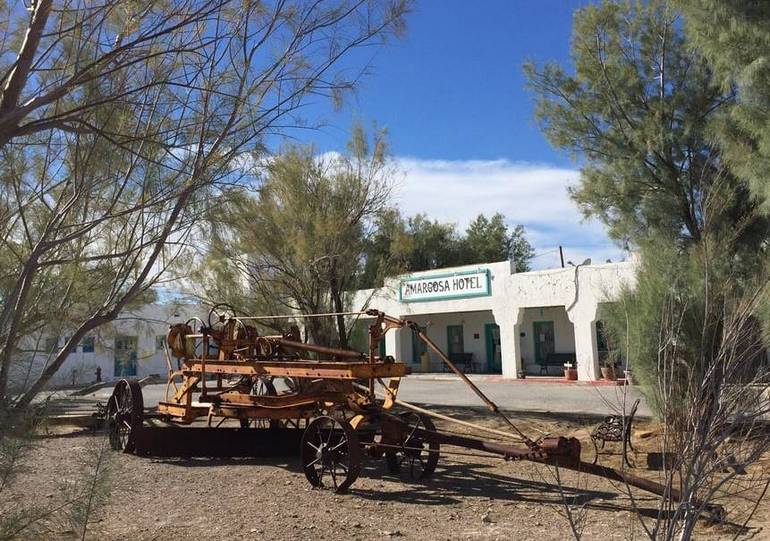
Death Valley Junction started as a water stop along the Tonopah and Tidewater Railroad, which operated from 1907 until 1940. In 1914, a 20-mile side spur was constructed from Death Valley Junction to the mines at Ryan, near Death Valley; the line operated until 1928 and carried Borax to the mill at Death Valley Junction for processing and packaging.
The Pacific Coast Borax Company Mill remains can still be seen in Death Valley Junction, directly across from the Amargosa Café. Railroad tracks were torn up years ago, but the grade of the Tonopah and Tidewater Railroads can still be seen in many places along Highway 127.
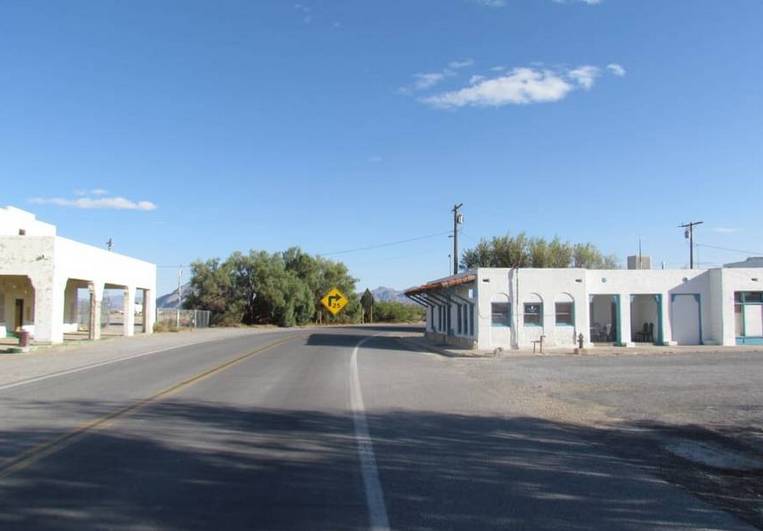
Death Valley Junction Amargosa Hotel
Starting as a tent city with a hotel, saloon, and store, Death Valley Junction got its first permanent buildings around 1915 when the Borax processing facility was built. 1925, the Pacific Coast Borax Company constructed the hotel and theater known as the Amargosa Opera House and Hotel.
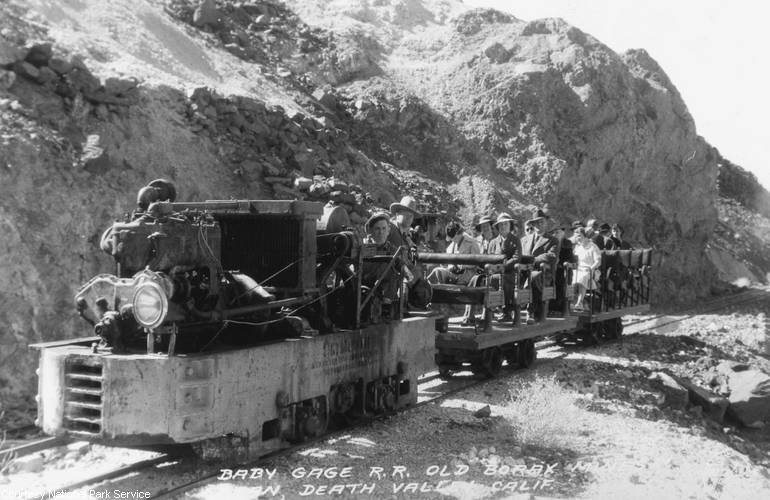
Ryan Mines Baby Gauge Railroad
The hotel catered to railroad investors, workers, and tourists visiting Death Valley. A Brill Passenger car (Death Valley Railroad) took passengers from the junction on a twenty-mile trip to the edge of Death Valley and the Ryan Mines for a few years. From there, tourists could tour the mines and ride on the Mine Baby Gauge Railroad. Death Valley RR ceased operations in 1931, the track was torn up, and most rail cars and locos were moved to New Mexico.
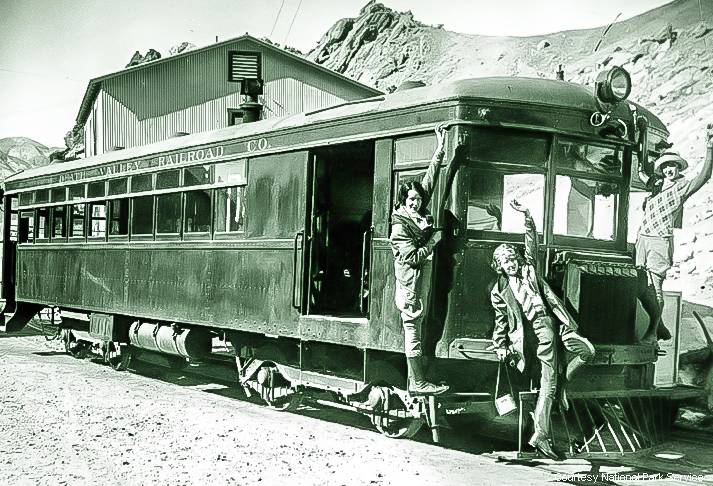
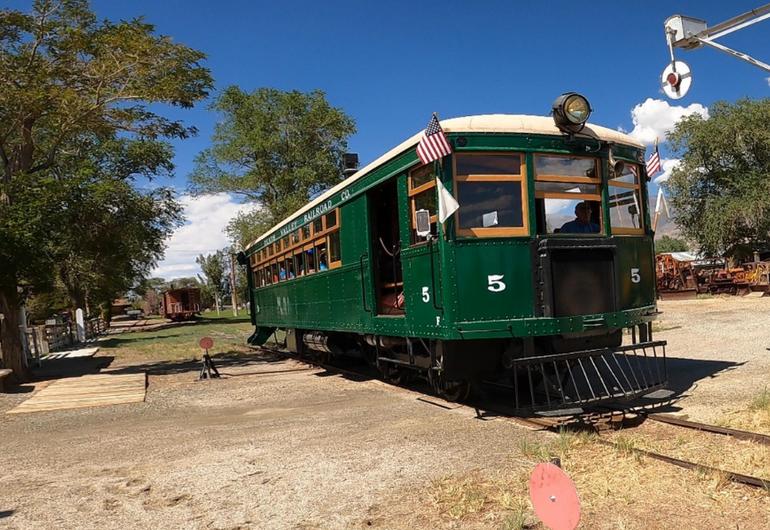
Death Valley Railroad Brill Car
The original Death Valley Brill car can be seen at the Laws Rail Museum in Bishop, California, and one of the original Death Valley Railroad steam engines can be seen at the Borax Museum at Furnace Creek in Death Valley. Ryan Mines and the town of Ryan are currently under the care of the Death Valley Conservancy, which limits access to this historic area of Death Valley. The Death Valley Brill Car was a self-propelled railcar used to transport tourists from Death Valley Junction to the mining town of Ryan, a distance of 22 miles.
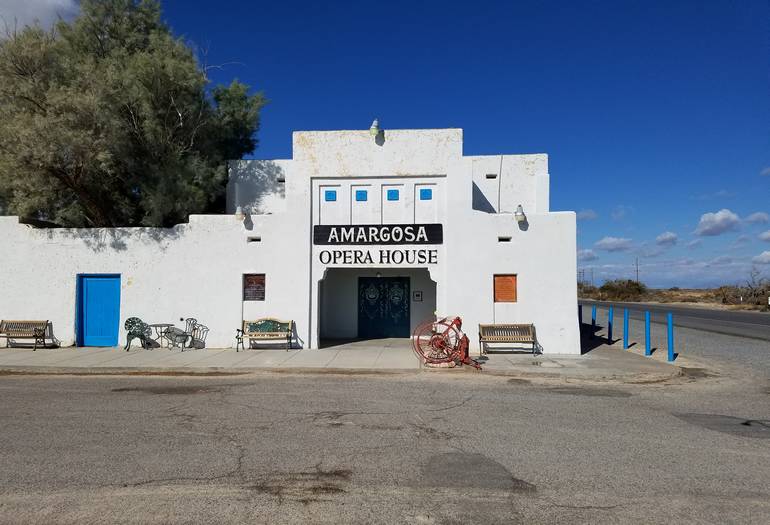
Amargosa Opera House Death Valley Junction
By 1950, Junction was little more than a ghost town. It struggled along as a gas stop for travelers heading to Death Valley. The city saw a small revival in the mid-1960s when Marta Becket, a dancer and actress, purchased the hotel. She renamed the theater Amargosa Opera House and set about restoring the aging buildings.
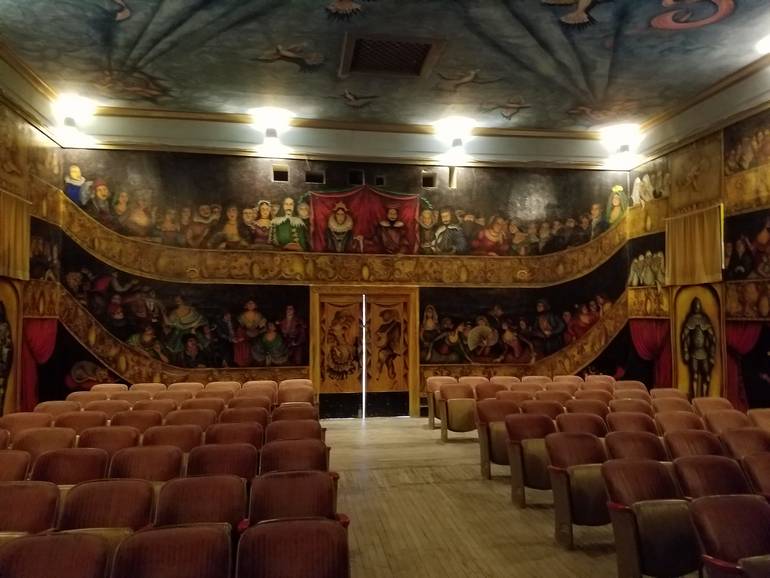
Over the years, Ms. Becket painted the walls and ceiling of the theater with colorful paintings of clowns, kings and queens, jousters, and revelers. She performed her ballets at the Amargosa Opera House for the next 40 years. Ms. Becket passed away in 2017 at the age of 92. Ms. Becket was succeeded by Jenna McClintock, who still performs Marta Becket’s Ballet several times a year at the Amargosa Opera House.
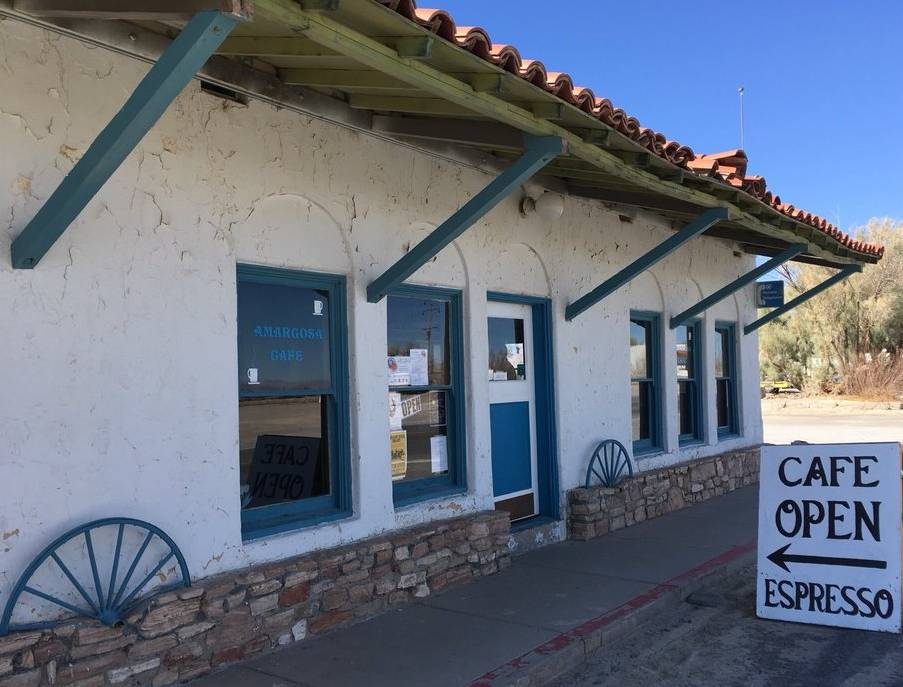
Death Valley Junction is at the junction of California State Route 127 and California State Route 190. The gas station in the area is now permanently closed. The Amargosa Cafe is generally open on weekends. If you can find someone to give you the time, tour the Amargosa Opera, a highly recommended House.
Nearby Death Valley Junction
Explore Historic Shoshone California
Shoshone, California, is a small desert town situated near the southern entrance of Death Valley National Park. Originally named Metberry Spring, the area was renamed Shoshone in 1909 and became a station stop on the Tonopah & Tidewater Railroad. Although many travelers tend to view it as nothing more than a quick pit stop on their way to Death Valley, the little town of Shoshone has a lot to offer, making it well worth spending an hour or two exploring and seeing what the city offers. Shoshone Village Website.
Tecopa Hot Springs: Old School Hot Tub Resort
Tecopa Hot Springs is a small desert town outside Death Valley National Park. It is a 90-minute drive from Furnace Creek Visitor Center or Las Vegas. The primary attractions in Tecopa include natural hot springs, mud baths, a few old resorts, and the Death Valley Brewery. Tecopa is situated along The Old Spanish Trail (Highway 127) and was once a stopping point for wagon trains on their way to California. Tecopa Hot Springs Resort.
China Ranch Date Farm & Bakery
China Ranch Date Farm is off the beaten path and worth a side trip on your next journey across the Mojave Desert. As you wander down into this little palm-lined haven between Death Valley and the Dumont Dunes, you will discover a gorgeous little river valley with interesting geological formations and many hiking trails to explore. Inside the gift shop, you can find local goods specially made for or by China Ranch. They have typical date-related items like cookies, muffins, date balls, and the ever-important date shake. Date Farm Website.
- 14
- 16shares
- Like
- X
- Digg
- Tumblr
- VKontakte
- Buffer
- Love This
- Odnoklassniki
- Meneame
- Blogger
- Amazon
- Yahoo Mail
- Gmail
- AOL
- Newsvine
- HackerNews
- Evernote
- MySpace
- Mail.ru
- Viadeo
- Line
- Comments
- SMS
- Viber
- Telegram
- Subscribe
- Facebook Messenger
- Kakao
- LiveJournal
- Yammer
- Edgar
- Fintel
- Mix
- Instapaper
- Copy Link
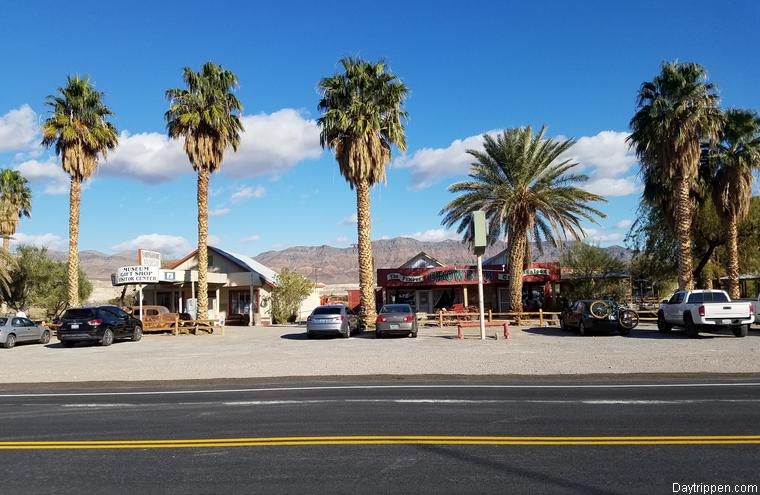
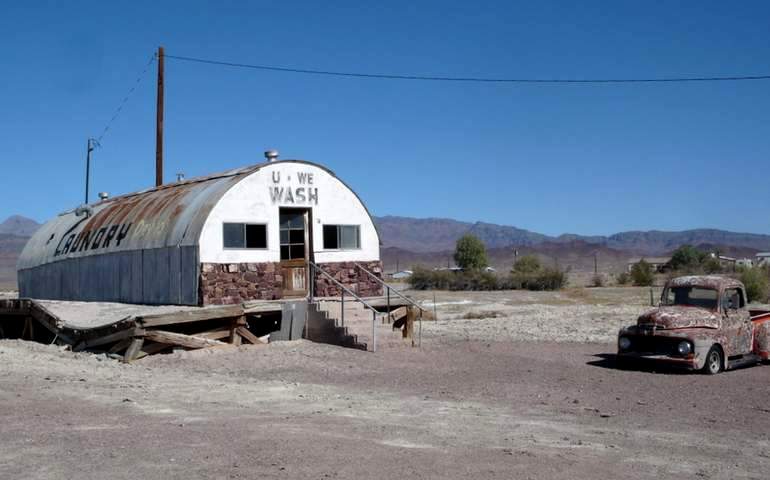
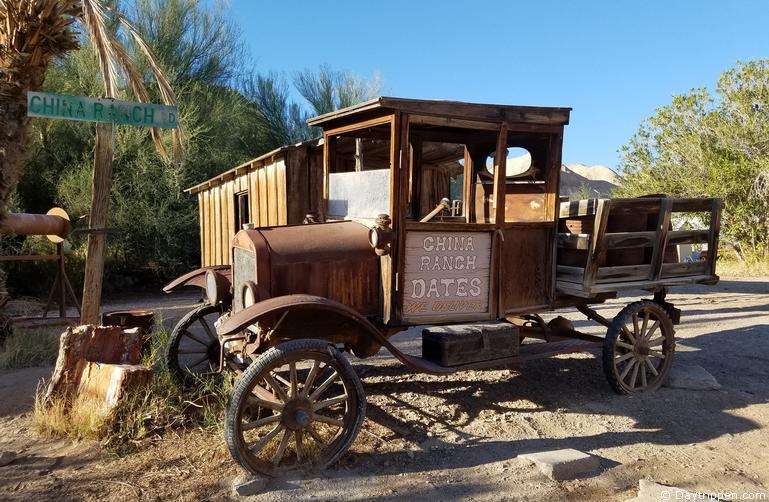
I grewup in the High Desert and love the history of it. Seems like im always hearing something new. Theres so much more history of the desert than people think.
Lived there in the late seventies, worked in the borax mines .at that time the population was 12.